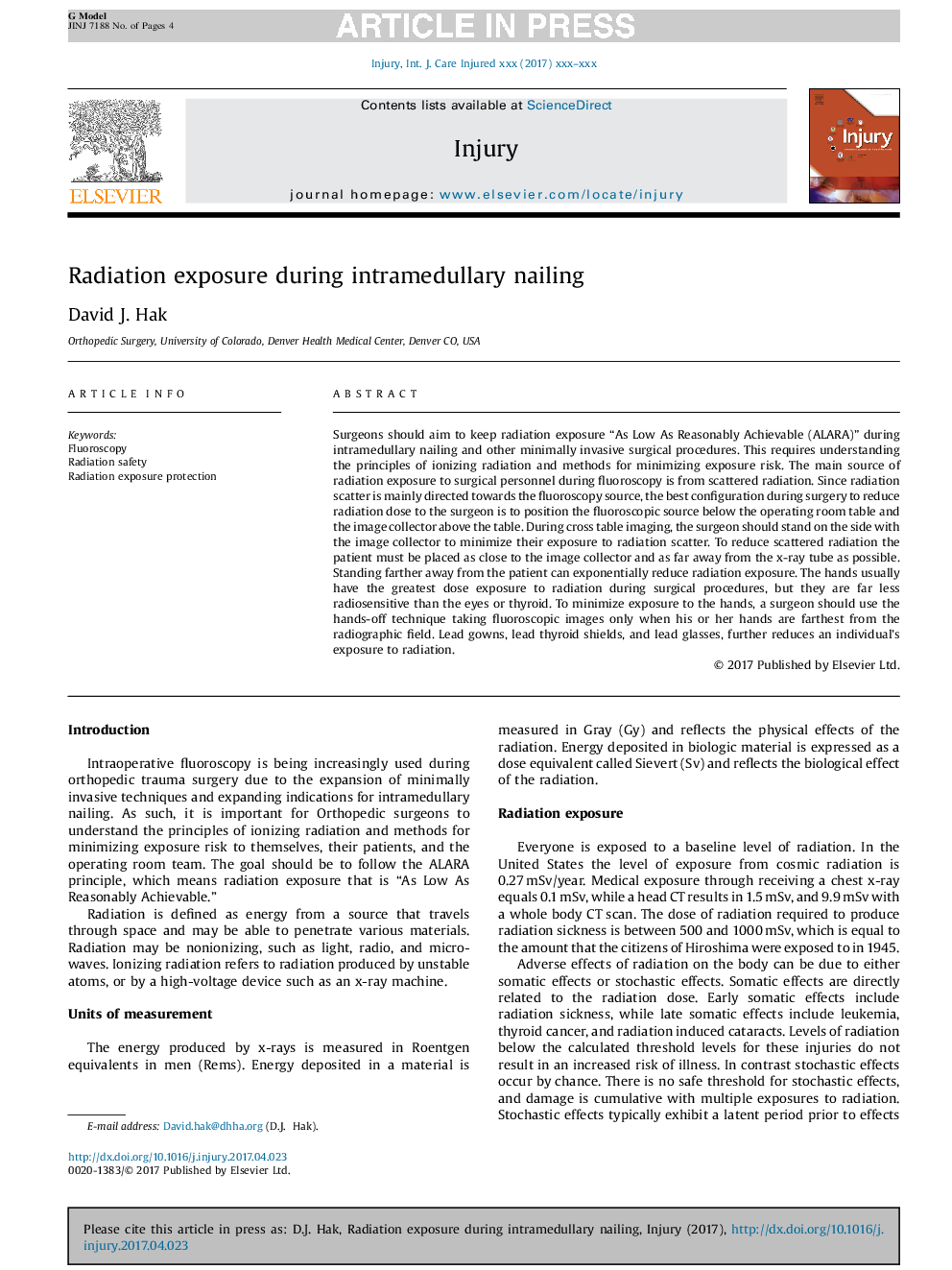| Article ID | Journal | Published Year | Pages | File Type |
|---|---|---|---|---|
| 5652629 | Injury | 2017 | 4 Pages |
Abstract
Surgeons should aim to keep radiation exposure “As Low As Reasonably Achievable (ALARA)” during intramedullary nailing and other minimally invasive surgical procedures. This requires understanding the principles of ionizing radiation and methods for minimizing exposure risk. The main source of radiation exposure to surgical personnel during fluoroscopy is from scattered radiation. Since radiation scatter is mainly directed towards the fluoroscopy source, the best configuration during surgery to reduce radiation dose to the surgeon is to position the fluoroscopic source below the operating room table and the image collector above the table. During cross table imaging, the surgeon should stand on the side with the image collector to minimize their exposure to radiation scatter. To reduce scattered radiation the patient must be placed as close to the image collector and as far away from the x-ray tube as possible. Standing farther away from the patient can exponentially reduce radiation exposure. The hands usually have the greatest dose exposure to radiation during surgical procedures, but they are far less radiosensitive than the eyes or thyroid. To minimize exposure to the hands, a surgeon should use the hands-off technique taking fluoroscopic images only when his or her hands are farthest from the radiographic field. Lead gowns, lead thyroid shields, and lead glasses, further reduces an individual's exposure to radiation.
Keywords
Related Topics
Health Sciences
Medicine and Dentistry
Emergency Medicine
Authors
David J. Hak,
